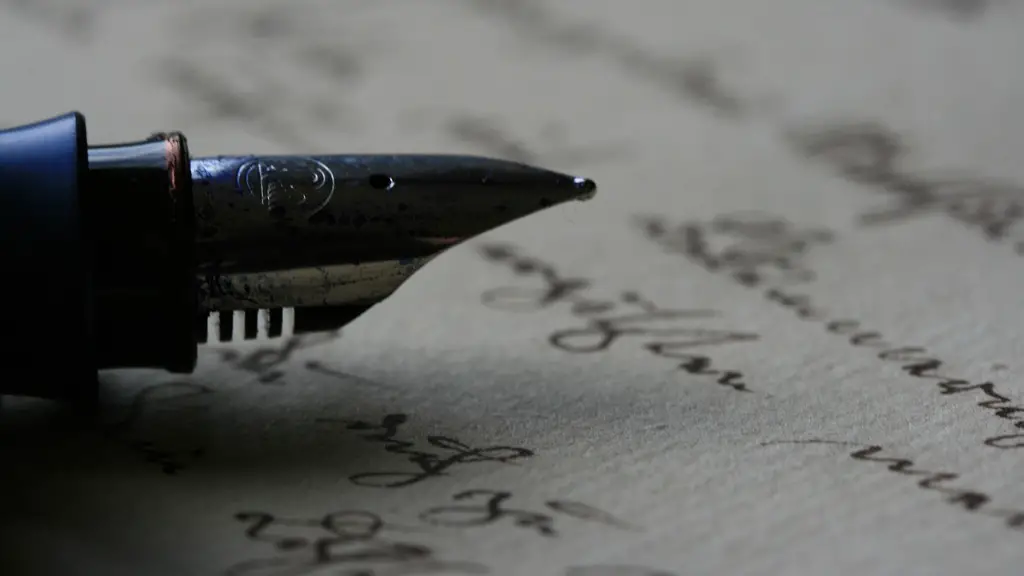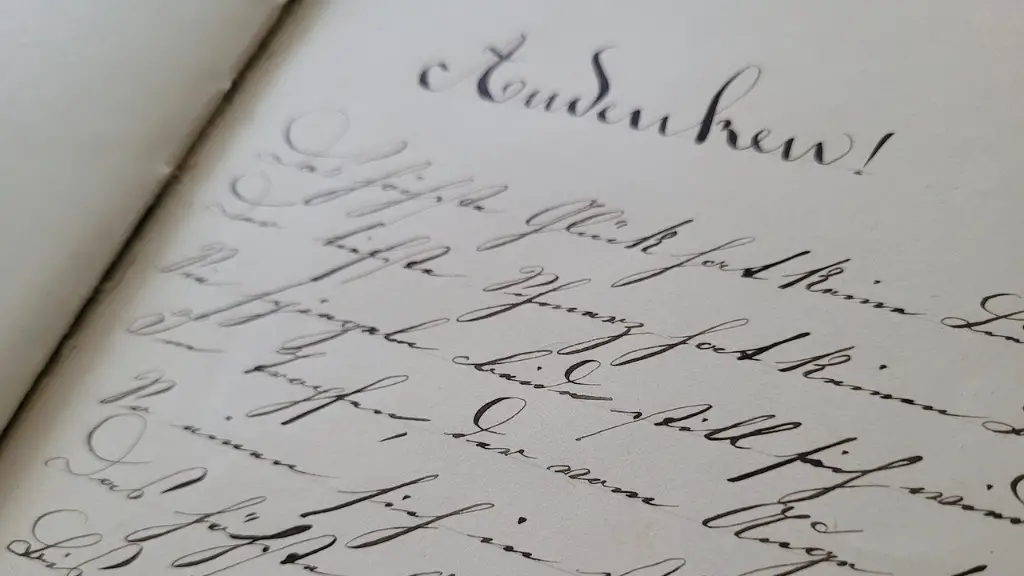Rhyme
Rhyming is a fundamental feature of poetry, used to lend a musical quality to the written word and create a sense of harmony. Rhymes can enhance the meaning of a poem, allowing the poet to couple two different ideas together to create new and more vivid imagery, often in powerful and emotionally charged ways. Rhyming has been used by poets throughout the ages, from the ancient Greeks and Romans to the present day.
Rhymes can also be used to illustrate concepts or ideas. A poet might use rhyming to emphasize a point and help the reader to better understand the poem. For example, a poem about friendship might use lines such as “Friendship weaves a magic spell/Throughout our times of joy and dread” to emphasize the importance of having someone to share both the good and the bad moments of life. Additionally, rhymes might be used to mark the end of a section within a poem, helping to break up the text and give the reader a sense of structure.
Rhythm
Rhyming is closely related to rhythm. Poems typically have a given number of syllables per line and a specific pattern that the words will follow. This pattern of timing and syllables creates a rhythm that not only makes the poem pleasing to the ear, but also helps to emphasize certain parts of the poem. For example, if a poet wanted to create emphasis on a particular clause, they might use a slower pace with fewer syllables. This slower pace would signal to the reader that the phrase is more important, enabling the reader to pay more attention to it.
Metaphor
Rhyming can also be used to create metaphors. Metaphors compare two unrelated objects or concepts to make a point. A poet might use rhyming to draw on the comparison, giving it a more lyrical quality that can make the poem easier to understand and more enjoyable to read. For example, in Robert Frost’s poem “The Road Not Taken,” he uses a metaphor of two roads branching off to emphasize the importance of making choices in life.
Style
Rhyming can be an important tool for creating a certain style of poetry. Certain types of poetry, such as sonnets and limericks, rely heavily on rhyme schemes to create a recognizable pattern. For example, in a sonnet, the rhyme scheme is usually ABAB CDCD EFEF GG. This structure can help to create a distinct sound, as well as provide a structure for the poem itself.
Emotion
Rhyming can also be used to evoke strong emotions in the reader or listener. Rhyming can create a surprised and unexpected moment, when the reader discovers that two ideas have been linked with a rhyme. Additionally, rhymes can invoke a feeling of nostalgia or familiarity in the reader, as many people are used to hearing rhymes from childhood stories or nursery rhymes.
Meaning
Finally, rhyming can be used to emphasize a deeper meaning in a poem. Rhyming words often have similar meanings and can be used to create a tangible connection between two ideas. This connection can help to underscore the emotional impact that a poem has on the reader.
Analysis
Rhyming is an essential tool for poets, helping to create a musical quality to the written word, evoke strong emotions in the reader, and emphasize key points. Rhymes can also be used to illustrate concepts or ideas and mark the end of a section within the poem. Additionally, certain styles of poetry rely heavily on rhyme schemes to create a recognizable pattern and lend a nostalgic or familiar feeling to the poem. Ultimately, rhyming can help to add depth to a poem, emphasizing its overall meaning and connecting two ideas together in a powerful and emotionally charged way.
History
Rhyming is an ancient form of art and has been used by poets throughout the ages, from the ancient Greeks and Romans to the present day. In classical poetry, rhyme was often used to mark the end of a section or to emphasize the importance of a phrase or line. This was especially true of Renaissance poetry, where rhymes served as a way to bring structure and coherence to a poem. As poetry changed over the years, so too did the use of rhymes, but they remain an essential tool for poets, helping to bring their message to life and create a unique and powerful experience for the reader.
Influence
Rhyming is not only an important tool for poetry, but it also has an influence on other aspects of language. Rhyming words are often used in songs and nursery rhymes, helping to create a lasting impression on listeners. Similarly, advertisers and marketers rely on rhymes to help create memorable slogans or jingles that help to sell their products.
Form and Structure
When writing poetry, there are many factors to consider when using rhyme, such as form and structure. Poets must pay close attention to the syllable count of each line and consider how a particular rhyme scheme might alter the overall meaning of the poem. Additionally, poets must think about the length of lines and how this might affect the rhythm and flow of the poem.
Conclusion
Rhyme is a powerful and essential tool for poets, allowing them to create a musical quality to their work, evoke strong emotions in their readers, and emphasize certain points. It has been used throughout the ages, from the ancient Greek and Romans to the present day, in all types of poetry, including sonnets and limericks. Ultimately, rhyming words can help to connect two ideas together, adding depth and emotional power to a poem.


